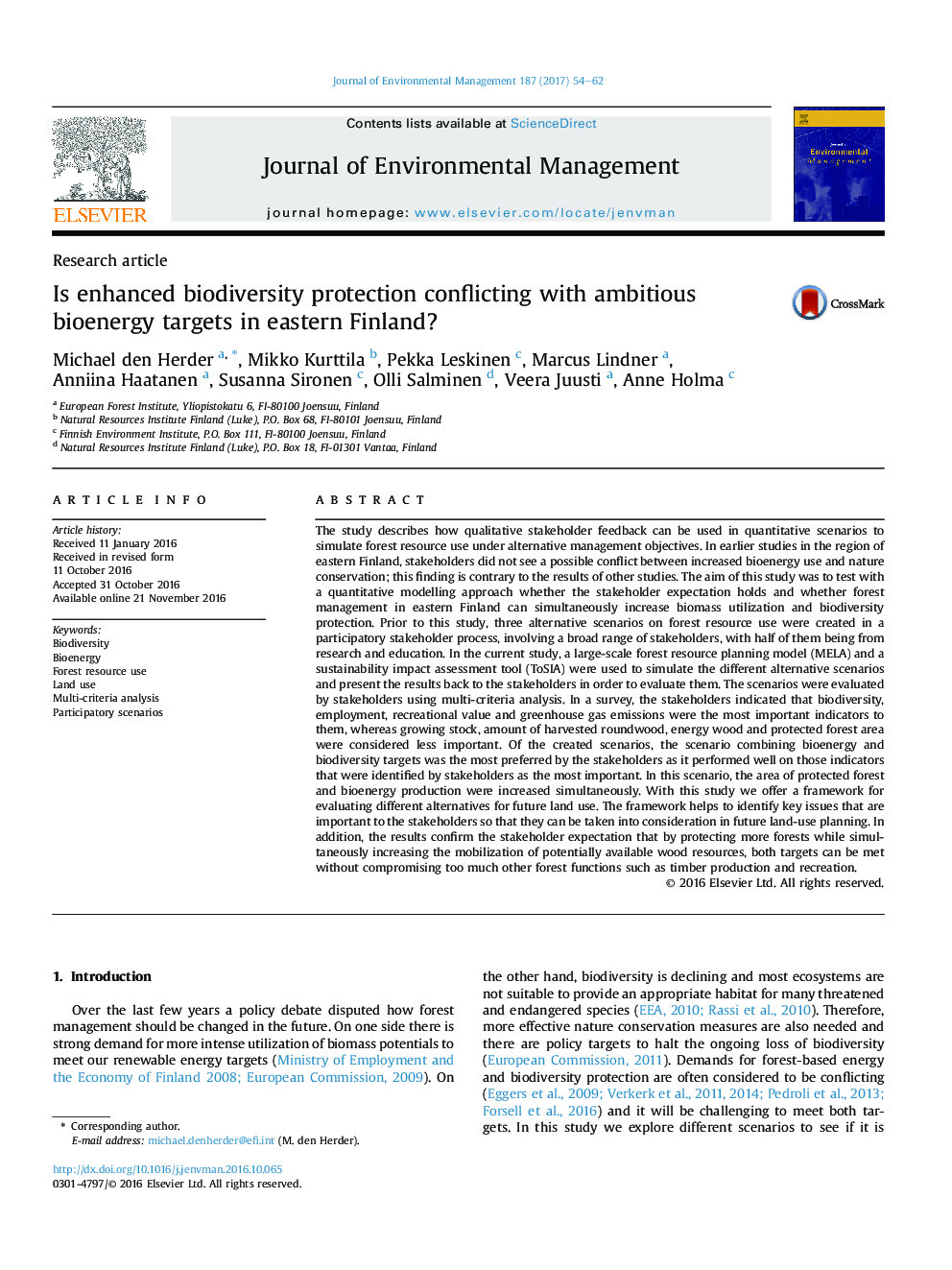| کد مقاله | کد نشریه | سال انتشار | مقاله انگلیسی | نسخه تمام متن |
|---|---|---|---|---|
| 5117354 | 1485228 | 2017 | 9 صفحه PDF | دانلود رایگان |
- Targets for increased use of forest biomass and nature conservation may cause conflicts.
- We tested in a participatory modelling approach the possibility of achieving both targets.
- In the study region it was possible to combine bioenergy use and nature conservation.
- This scenario was also preferred by the stakeholders.
- Our framework offers decision support to compare alternatives in resource and land use planning.
The study describes how qualitative stakeholder feedback can be used in quantitative scenarios to simulate forest resource use under alternative management objectives. In earlier studies in the region of eastern Finland, stakeholders did not see a possible conflict between increased bioenergy use and nature conservation; this finding is contrary to the results of other studies. The aim of this study was to test with a quantitative modelling approach whether the stakeholder expectation holds and whether forest management in eastern Finland can simultaneously increase biomass utilization and biodiversity protection. Prior to this study, three alternative scenarios on forest resource use were created in a participatory stakeholder process, involving a broad range of stakeholders, with half of them being from research and education. In the current study, a large-scale forest resource planning model (MELA) and a sustainability impact assessment tool (ToSIA) were used to simulate the different alternative scenarios and present the results back to the stakeholders in order to evaluate them. The scenarios were evaluated by stakeholders using multi-criteria analysis. In a survey, the stakeholders indicated that biodiversity, employment, recreational value and greenhouse gas emissions were the most important indicators to them, whereas growing stock, amount of harvested roundwood, energy wood and protected forest area were considered less important. Of the created scenarios, the scenario combining bioenergy and biodiversity targets was the most preferred by the stakeholders as it performed well on those indicators that were identified by stakeholders as the most important. In this scenario, the area of protected forest and bioenergy production were increased simultaneously. With this study we offer a framework for evaluating different alternatives for future land use. The framework helps to identify key issues that are important to the stakeholders so that they can be taken into consideration in future land-use planning. In addition, the results confirm the stakeholder expectation that by protecting more forests while simultaneously increasing the mobilization of potentially available wood resources, both targets can be met without compromising too much other forest functions such as timber production and recreation.
Journal: Journal of Environmental Management - Volume 187, 1 February 2017, Pages 54-62
